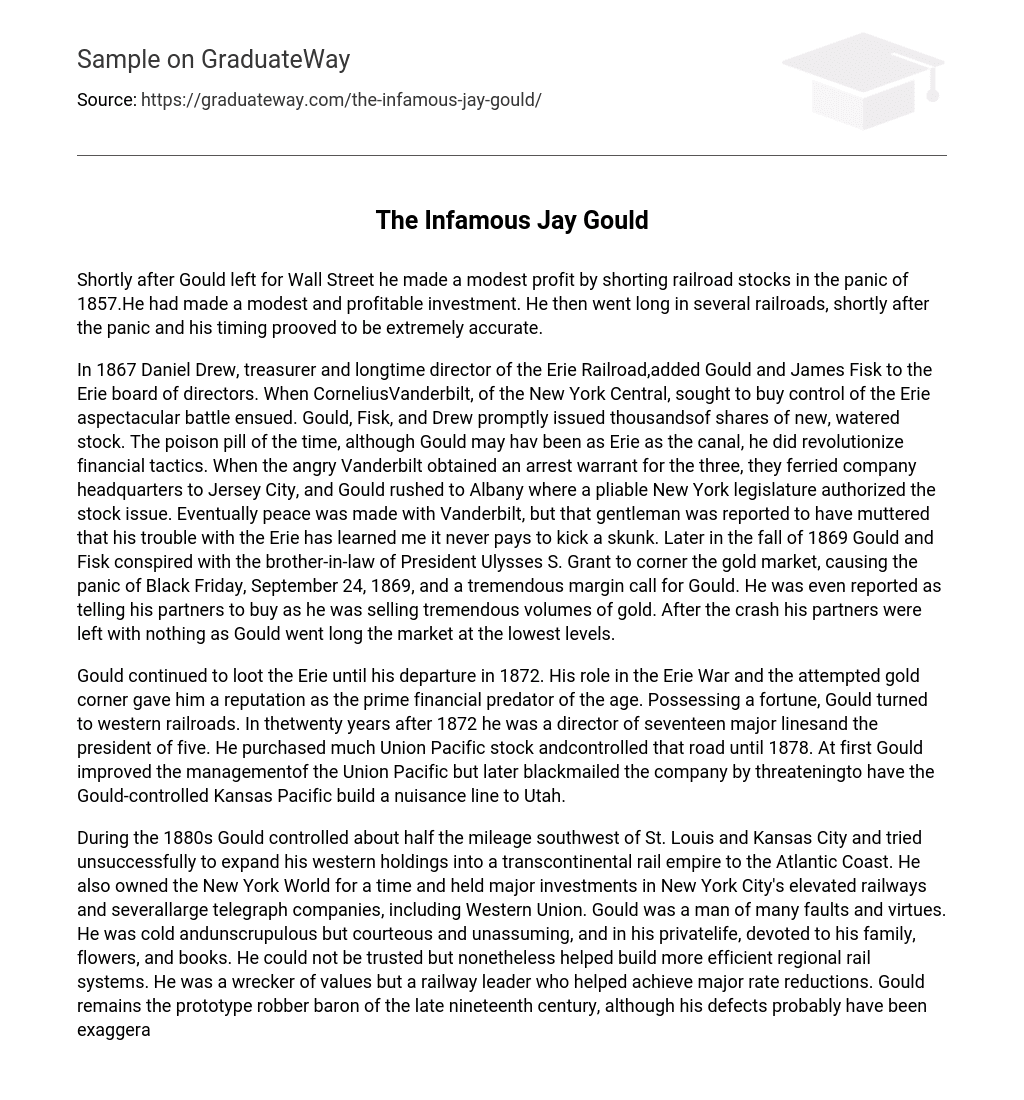After leaving for Wall Street, Gould successfully made a small profit by shorting railroad stocks during the panic of 1857. His investment was both modest and profitable. Following the panic, he decided to go long on multiple railroads, and his timing was proven to be remarkably precise.
In 1867, Daniel Drew, who was the treasurer and had been a director of the Erie Railroad for a long time, appointed Gould and James Fisk as directors on the Erie board. At that time, the New York Central’s Cornelius Vanderbilt tried to gain control of the Erie, leading to a fierce battle. To counter Vanderbilt’s attempt, Gould, Fisk, and Drew quickly issued numerous new shares of inflated stock. Although Gould may have been as native to Erie as the canal itself, he did bring about significant changes in financial tactics. Angered by their actions, Vanderbilt obtained an arrest warrant for the three men. In response, they moved the company’s headquarters to Jersey City and Gould hurried to Albany, where a cooperative New York legislature authorized the stock issuance. Eventually, a resolution was reached with Vanderbilt; however, he was rumored to have muttered that his experience with the Erie taught him that it never pays to rally against a cunning adversary. In the autumn of 1869, Gould and Fisk conspired with President Ulysses S. Grant’s brother-in-law to manipulate the gold market and caused the panic of Black Friday on September 24, 1869. This event resulted in a massive margin call for Gould. It was even reported that he instructed his partners to buy while he sold large quantities of gold. Following the crash, his partners were left with nothing as Gould took advantage of the lowest market prices.
Gould’s plundering of the Erie continued until he left in 1872, earning him a reputation as the top financial predator of the time. With a vast fortune, Gould shifted his focus to western railroads. From 1872 onward, he served as a director for seventeen major rail lines and held the presidency of five. Gould acquired a significant amount of Union Pacific stock and maintained control over the road until 1878. Initially, he improved Union Pacific’s management, but later resorted to blackmail by threatening to construct a troublesome line to Utah through his Gould-controlled Kansas Pacific.
During the 1880s, Gould controlled approximately half of the mileage southwest of St. Louis and Kansas City. He had aspirations of expanding his western holdings to create a transcontinental rail empire stretching to the Atlantic Coast, but his attempts were unsuccessful. Alongside his rail ventures, Gould temporarily owned the New York World and held significant investments in New York City’s elevated railways and several large telegraph companies, including Western Union. Despite his numerous flaws and virtues, Gould possessed a complex personality. He was both cold and unscrupulous, yet courteous and unassuming. In his personal life, he was devoted to his family, flowers, and books. While he was not considered trustworthy, he contributed to the development of more efficient regional rail systems. He was known for devaluing others’ assets, but as a railway leader, he played a key role in achieving significant rate reductions. Gould is often seen as the epitome of a robber baron in the late nineteenth century, although some argue that his faults may have been exaggerated because he always felt uneasy with the media.
History





